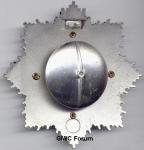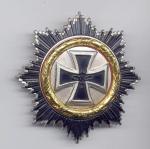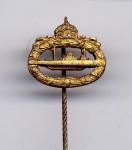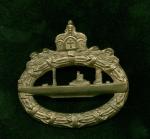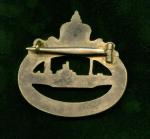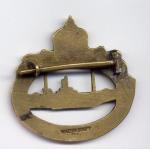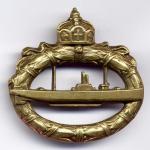-
Posts
5,391 -
Joined
-
Last visited
-
Days Won
3
Content Type
Profiles
Forums
Blogs
Gallery
Events
Store
Everything posted by Gordon Williamson
-
Rick, Did a bit more checking. The Dutch built vessels were the Birinc Inon? and the Ikinci Inon?. The Italian boats were the Dumlupinar and the Sakarya. Saldiray, Yildiray and G?r were built in Germany. No more were added until the late 1940s. They got 8 from the US and 3 from Britain in the 1950s. More modern US types came in the 1970s and between the mid 1970s and mid 1980s six new German subs, three built in Germany and three in Turkey built under license. Apparently the greatest number of subs serving in the Turkish Navy at any one time has been 10. So, Turkish sub badges from any period are relatively scarce.
-
Michel Yes I have the reverse view. I'll edit this post to add the photo when I get home. It was presented to Otto Koehler by the crew of U-377. It was fire damaged which melted the solder attaching the pin fitting which has now disappeared. The badge was recently donated to the U-Boot Archiv by U-Boat historian Jak Mallmann Showell.
-
Darrell, I agree with you. This is an often emotive subject but at the end of the day its a matter of personal choice. I would certain shy away from "cleaning" real old stuff like, say a nicely toned real silver Imperial 1870 EK where I think the patina definitely adds to the charm. However, as Dave has suggested, silver "dipping" can bring up the frosted finish on more recent (i.e. WW2 ) period pieces quite magnificently. I've seen "dipped" pieces (i.e. an EK1 Spange) where the "frosted" finish on a grungy looking piece ( frosted finish doesn't develop a nice patina, it just goes grungy and dirty looking) has been brought back to its original appearance alongside untouched minty pieces and there is no way to tell the difference so it doesn't spoil an attractive patina in these circumstances.
-
Hi Rick, Turkey's first submarines were two ancient Nordenfeldt vessels built in 1889 and which were refurbished for Turkey. They then purchased two Dutch built subs in 1928, and two Italian built vessels in 1931. Germany contributed a further two in the mid 1930s. Overall, thier sub "fleet" was pretty tiny, so these badges are rather rare. The badge shown was issued to officers and came with a miniature for dress wear. Junior ranks had a once piece version of similar design but with the sub contained entirely within the wreath, not overlapped at the sides, on a solid centre field and with the letters TC just below the Crescent moon. This version was dropped in 1935. The modern design of this badge has a wider laurel wreath and is of much poorer quality.
-
Officially introduced in September 1926 but not thought to have actually been issued until a couple of years later. Still in use today but in a farly crappy modern style.
-
The "Classic" Imperial U-Boat Badge, marked on the reverse "WALTER SCHOTT / fec." Not a maker mark, this refers to the famed artist Walter Schott who designed the badge ( in the same way that artists such as Peekhaus, Bock etc are named on the reverse of some WW2 Kriegsmarine badges). The "Walter Schott" badge is actually considered to have been the product of Juncker of Berlin.
-




